|

Mustang Vacuum Systems ORION
Roll to Roll Deposition Systems
Substrate: Up to 10,000 FT
length, 1000 MM wide flexible substrates configured with 1-10 deposition
sources for precision and speed. Deposition zones are individually
configurable for PVD sputter, evaporation, co evaporation and sublimation
enabling the next generation of thin film technologies.
Learn More
Contact us via E-Mail: inquiries@mustangvac.com |
|
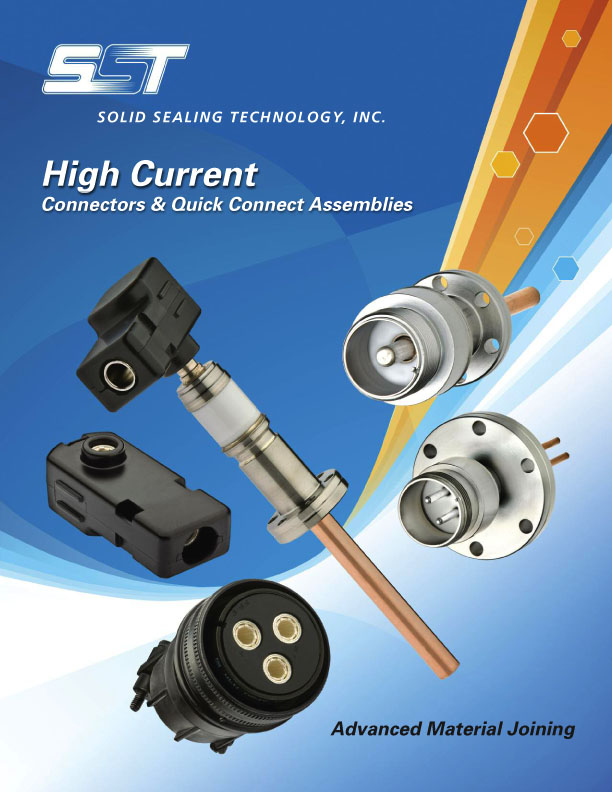
Solid Sealing Technology specializes in the design and manufacture of highly engineered hermetic products using metalizing, brazing, glass-ceramic sealing, welding, and critical assembly. SST manufactures industry standard and custom designed Vacuum Feedthroughs, Coaxial Connectors, Multi-Pin Connectors, Thermocouples, and Isolators for high temperature, UHV, and high pressure applications.
Contact:
Ph: 518-874-3600
Fax: 518-874-3610
info@solidsealing.com
| 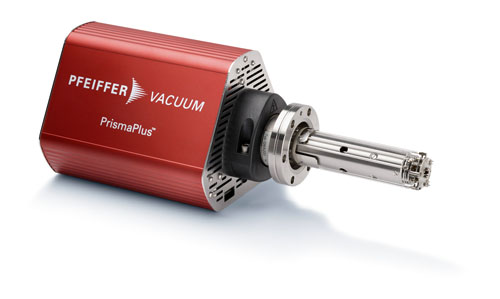
Sensitive, Stable and Intelligent RGA
The PrismaPlus™ mass
spectrometer for qualitative and quantitative gas analysis and leak
detection delivers high sensitivity, stability and intelligent
operation. It provides precise and stable results to 300 amu with a
detection limit of 1x10-14 mbar. The Quadera software is
easy-to-operate and offers an easy-to-read platform for capturing and
visualizing all measured data and parameter records.
For More Information
Click Here
Contact:
603-578-6500
|
Large
Cryo Pumps
Specializing
in high reliability and high refrigeration power, ULVAC Cryogenic Pumps deliver
maximum pumping speed and capacity. ULVAC offers the premier high-powered
solution to your demanding cryogenic pumping application. ULVAC has developed
specialty cryo pumps; UHV, low-vibration, "flat-type",
corrosion-proof, and a high-speed water vapor pump version.
Learn More
Contact
1-978-686-7550
sales@us.ulvac.com |
Reliable Handling
in Large Surface Processes with Comdel's ESC - HV Power
Comdel's latest electrostatic chuck power supply
can be configured to deliver from 6 to 10KV of power for reliable handling in
large surface processes. Equipped with low stored energy and built-in current
limiting, the ESC-HV will safeguard your process from surges and arcs. This
user-friendly design contains parameter adjustments through variable controls,
and is fully programmable to give the user maximum flexibility. Learn more.
Comdel11 Kondelin Road
Gloucester, MA 01930
Tel: 978-282-0620 or 800-468-3144
Fax: 978-282-4980 www.comdel.com
info@comdel.com |
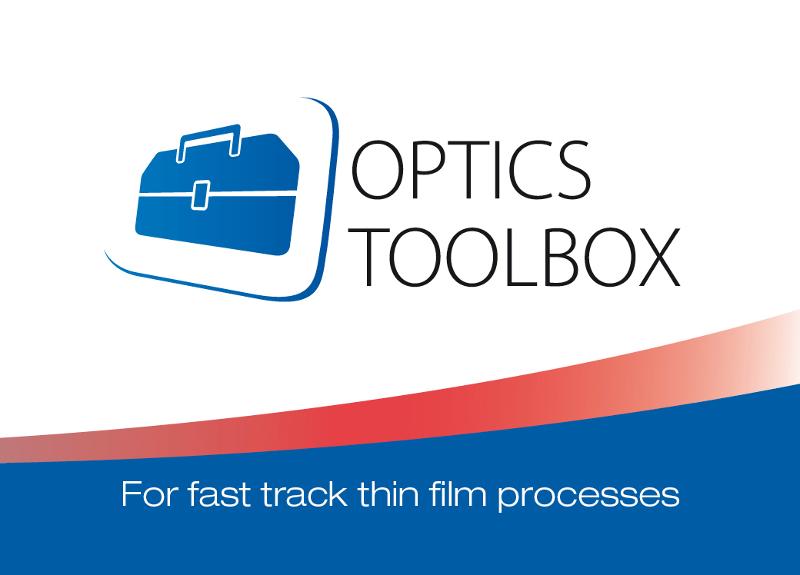
Reduce your development time, improve
your thin film process performance and cut your costs with Evatec's new "Optics
Toolbox" - Seamless integration of thin film design software, layer end point
strategy, optical monitoring, process recipe generation and execution with Khan
system and process controller on BAK Evaporator and MSP Sputter platforms.
Phone:
(603)
669-9656
www.evatecnet.com
E-Mail: infoNA@evatecnet.com
|
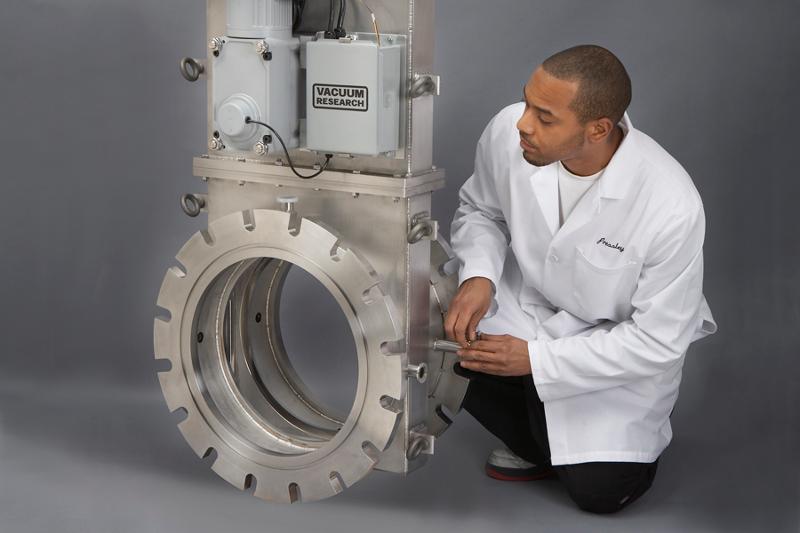
Steel and Aluminum High Vacuum Poppet Valves
Aluminum, Stainless or Mild
Steel Valves with flanges to match
diffusion & Cryo pumps. Electroless nickel optional on steel valves.
High
conductance full opening port. Leak tested to better than 5 X 10-10
scc/sec.
RoHS compliant and CE marked.
Phone: 800-426-9340
Web: www.vacuumresearch.com
Email: vrc@vacuumresearch.com |
|

MEWASA
has expanded the manufacturing possibilities of its
bellows production, allowing the manufacture of bellows up to 1100mm in
diameter.
Combined with the modern PC-based control, our machine provides the
flexibility
to weld arbitrary bellows profiles, including oval shaped bellows with
inside
dimensions of 66.7 to 117.5mm. MEWASA
has widened its capabilities, offering greater design solutions to meet
your engineering
applications, whether it is larger dimensions or different profile
shapes.
Contact: Ira Miller,
General Manager,
Mewasa North America
i.miller@mewasa.ch
Tel: 520-797-6980
|
|
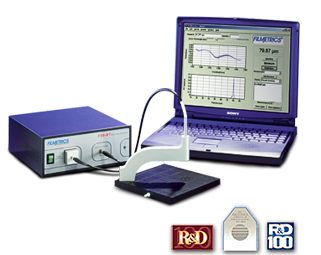
Filmetrics Thin-Film Thickness Measurement Systems
-Measure thickness from 1nm to 1mm
-Measure refractive index and other properties
-Used in thousands of applications worldwide
We offer the industry's only complete line of thin-film
measurement instruments. With our 24-hour online
"Hands On" support, expert help is only a minute away.
Contact:
www.filmetrics.com
858-573-9300 |
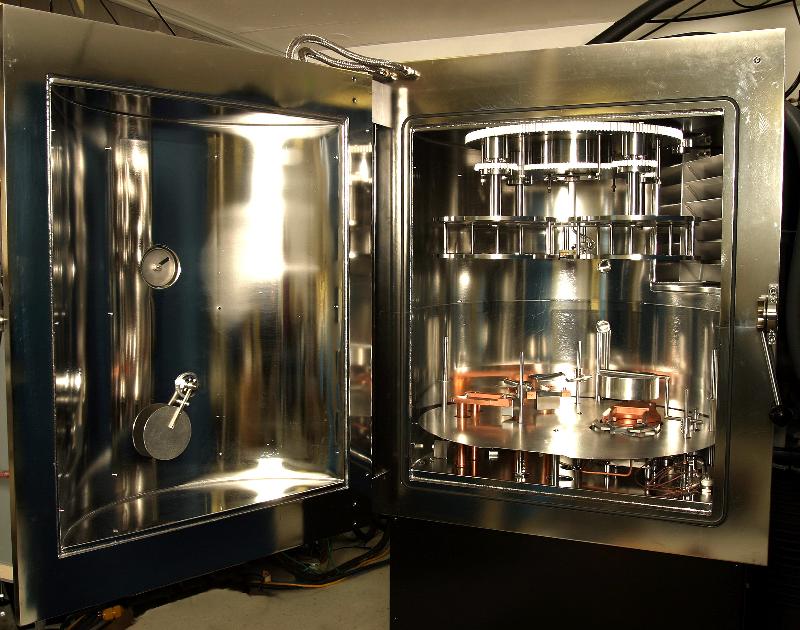
Dynavac's 1-meter Optical
Coating System
is a cost-effective tool for producing high-quality precision optics. Its
versatile design supports a wide range of process options including IAD, and
the split-cylinder chamber provides easy maintenance while minimizing footprint.
System interface and control is simple and supports download capability from
most thin film design packages.
www.dynavac.com
Telephone: 781-740-8600
E-Mail: sales@dynavac.com
|
|
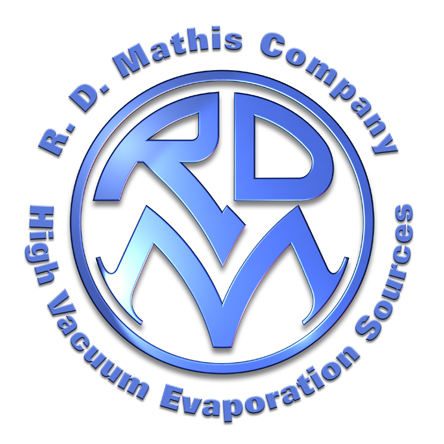
The R.D.
Mathis Company
specializes in the fabrication of high vacuum evaporation sources for thin film
coating industries. We offer a comprehensive selection of tungsten, molybdenum
and tantalum sources through our catalog and offer custom fabrication to meet
your specific coating needs. Our "LV Series" Low Voltage, High
Current Power Supplies and "GP 100" Inert Gas Purifier compliment
your evaporation process. Contact: www.rdmathis.com 562-426-7049
|

Speed
pump-down and vacuum performance with RediVac™ Vented Screws and Vacuum Baked
O-Rings from
UC
Components Inc. www.uccomponents.com |
|
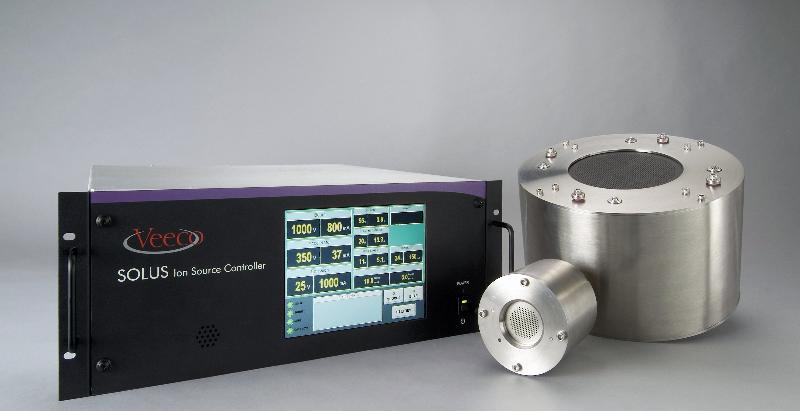
Veeco's
new SOLUS™ DC Ion Source Controller features a state-of-the-art precision control system
design providing reliable and stable power for ion source operation in all
types of processes. Integrated
power modules and gas flow control with ratio capabilities allow for optimal
ion source control and performance in the most demanding process environments. To Learn More Visit: www.veeco.com 970-221-1807
|
|
SVC 2011 TechCon in Chicago, IL
|
|
SVC On-Location Education Program
Join SVC in Beijing, China October 18-19, 2010 for this English language presentation of the SVC Tutorial Course
"Vacuum Systems, Materials and Operation" Instructor: John O'Hanlon, University of Arizona Click here to learn more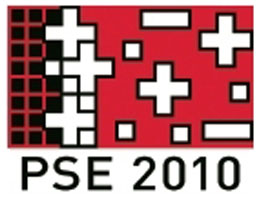 SVC Tutorial Course offered at PSE 2010
Garmisch-Partenkirchen, GermanySept 16, 2010"The Practice of Reactive Sputtering"Instructor: Allan Matthews, University of Sheffield, UK Click here to learn more |
 Like us on Facebook! Like us on Facebook!
Like us today and keep track of all the up-to-the-minute SVC News.
|
|
|
|
As the world's marketplace continues to battle between an optimistic future and the struggle of today's economic realities, there are still endless examples of how research blossoms into industry-scale technology. SVConnections provides readers with stories of these successes related to vacuum coating; along with promising developments in research, refinements and improvements in established technologies, companies leading the industry with state-of-the-art products and processes, the people who make it all happen, and where the money is. After you read this issue of SVConnections, share the news and forward it to a friend! Use the link at the end of the page.
|
|
PVD Coating Captures Fingerprints on Difficult Surfaces
Pennsylvania State
University professors, Robert Shaler and Ahklesh Lakhtakia, have developed a
PVD coating proce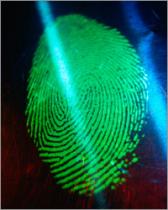 ss that can reveal hard-to-develop fingerprints on nonporous
surfaces. They can accomplish this
without altering the chemistry of the print. Current fingerprint analysis utilizes the mixture of skin
secretions which make up fingerprints. Chemicals are applied which react with the
fingerprints forming a visible or fluorescent image. This method fails as fingerprints age and dry. The PVD coating process
uses the geometry of the fingerprints.
The ridges and valleys in the fingerprint show up on the new surface and
analysts can easily read them using optical devices. ss that can reveal hard-to-develop fingerprints on nonporous
surfaces. They can accomplish this
without altering the chemistry of the print. Current fingerprint analysis utilizes the mixture of skin
secretions which make up fingerprints. Chemicals are applied which react with the
fingerprints forming a visible or fluorescent image. This method fails as fingerprints age and dry. The PVD coating process
uses the geometry of the fingerprints.
The ridges and valleys in the fingerprint show up on the new surface and
analysts can easily read them using optical devices.
Researchers tested two
materials for coating, magnesium fluoride and chalcogenide glass. The coating material is heated in a
vacuum as the artifact is rotated quickly to allow a very even deposition,
about one micron thick.
Robert Shaler is
Professor of Biochemistry and Molecular Biology and Director of Penn State's
forensic sciences program. Ahklesh
Lakhtakia is Professor of Engineering Science and Mechanics.
Learn More at the Pennsylvania State University Link: http://live.psu.edu/story/46687/nw4
Image: publicsafety.utah.gov
|
Cell Assembly: Low Cost, Continuous and Ecological Foil Cleaning
Process for Photovoltaics
This article is from Photovoltaics World
"Atmospheric plasma
cleaning protocols are gaining early adoption within thin film PV foil cleaning
processes, with some of the key drivers being its use of a continuous,
roll-to-roll (R2R) process, significantly lower production floor footprint, and
lower capital cost. The highly efficient method for removing organic surface
contaminations from PV foils prevents generation of chemical waste effluents
found with wet-cleaning processes. Rory A. Wolf, Enercon Industries
Corporation, examines plasma cleaning systems and details etching, cleaning and
bonding trial data confirming system efficacies.
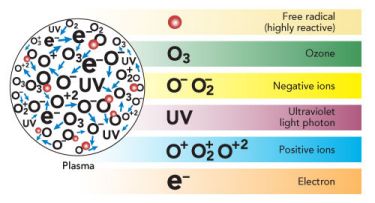
Read the full article on www.electroiq.com
Image: from www.electroiq.com. Originally published in "Cell Assembly: Low Cost, Continuous and Ecological Foil Cleaning Process for Photovoltaics" August 2010.
|
Benedictine Monastery Received Highest U.S.
LEED Rating
Holy Wisdom Monastery in Middleton, Wisconsin received the
U.S.' highest level LEED Platinum rating for buildings with 63 out of 69
points. It is built of almost
100% recycled material from the original monastery. The new monastery which includes a home and conference
center features a geothermal heating and cooling system. Customized glass is used to control
window glare, eliminating need for any window coverings. The 20kW solar panel design was
incorporated into the roof design and currently provides 13% of the monastery's
energy. The building design allows
for future upgrades which would make the building carbon neutral. Contact the monastery for a visit.
 Visit www.HomeDesignFind.com for more details Visit www.HomeDesignFind.com for more details
Further details in Environmental Engineering News
Image: www.HomeDesignFind.com
|
Exatec* and ULVAC Announce
Collaboration on Mass Production Systems of Polycarbonate for Car Windows
Exatec* (Wixom, Michigan), a wholly owned subsidiary of
SABIC Innovative Plastics, is one of the world's leading suppliers of advanced
polycarbonate glazing solutions for the transportation industry. ULVAC (Kanagawa, Japan), a leader in
mass-production vacuum technology, announced their collaboration with Exatec to
"accelerate cost-effective, high-volume production of weatherable, scratch-resistant,
plasma-coated Lexan* polycarbonate resin for vehicle windows." ULVAC will utilize their vacuum
equipment manufacturing expertise and incorporate Exatec's proprietary plasma
coating technology to manufacture turnkey high volume production systems. This solution will enable
automakers to meet more stringent vehicle CO2
emission restrictions
by replacing heavier glass windows with lighter polycarbonate resin
windows. U.S. rules take effect in
2016 where vehicles must achieve an average of 35.5 miles per gallon. In Europe, 2015 CO2
emissions
must drop to 0.46 lbs/mile, and 0.35 lbs/mile by 2020. Greg Adams, vice president, Automotive,
SABIC Innovative Plastics stated, "Over the past few years Exatec coatings and
Lexan have been used for the glazing on many technology demonstration vehicles
from innovative OEMs."
*Trademarks of SABIC Innovative Plastics IP BV.
Read more details in this ULVAC press release, July 21, 2010
Click here for more information on Exatec |
|
TSMC Focuses on Solar CIGS Technology Instead
of c-Si
Taiwan Semiconductor Manufacturing Corporation (TSMC),
leading global semiconductor foundry, increased its investment in solar
energy. They have made a strategic
decision to focus on thin film Copper Indium Gallium Selenide (CIGS) technology
instead of mainstream crystalline silicon (c-Si) technology. CIGS technology has higher yields
than Cadmium Tellurium (CdTe) and amorphous Silicon (a-Si). TSMC bought a 21% equity stake in CIGs
photovoltaic module startup Stion (San Jose, CA) for $50 million. TSMC will license Stion's technology
and conduct joint research with them.
Stion claims to have achieved >13% efficiency with plans to increase
it to 15%. TSMC is building
new CIGS fabrication facility in central Taiwan. TSMC paid $192 million last year for a 20% share in Motech
Industries Inc. (Tainan, Taiwan). Motech is the largest solar cell manufacturer in Taiwan and one of top
10 global manufacturers based on output in 2008. Further details of TSMC investment in EE Times |
Emerging Blue Phase LEDs
Researchers at University of Central Florida's College of Optics
and Photonics have made advancements in Blue Phase LEDs. They have taken polymer stabilized Blue
Phase Liquid Crystals (BPLC) which operate at room temperature and made four
improvements. First, reduction in
response time to sub-millisecond range which minimized motion image blur. Image
blur is a problem when fast moving objects are shown on regular LCDs. Faster
response also eliminates need for color filters for field-sequential color
display, which triples the optical efficiency, reduces power consumption and
lowers production costs while producing crisper images. Second, the required alignment layer
(typically polyimide or inorganic silicon dioxide) simplifies manufacturing
process thereby reducing cost.
Third, the dark state of the BP LCD is optically isotropic, that is
symmetrical with wide viewing angle.
Lastly, BP transmittance is insensitive to the cell gap width with
in-plane electrodes depending on birefringence of LC composite. This is desirable for large-panel LCD
processing.
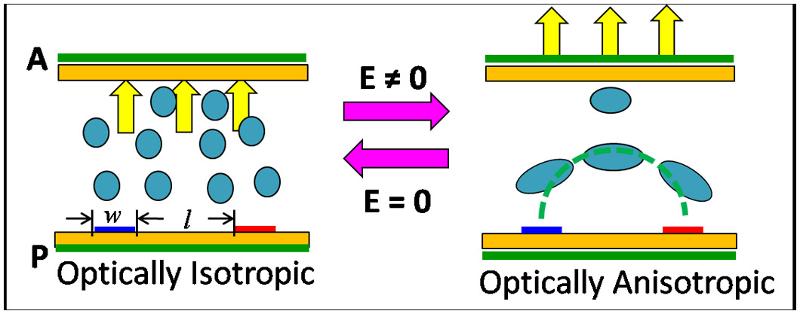
Research continues to address remaining technical issues
such as high (50 Vrms) operating voltage, low transmittance (~65%), and narrow
mesogenic temperature range.
For further details read the full SPIE article on www.spie.org
Image: Courtesy of www.spie.org and Prof. Shin-Tson Wu, UCF, CREOL
|
Nano-Coating Cools
Chips Four Times Faster
Researchers have found that ZnO nanoscale coatings increase
the heat transfer rate of bare Al or Si substrates. The joint study, 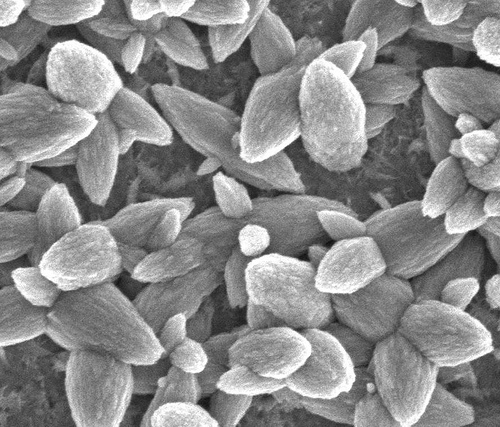 funded by Army Research Laboratory, at
Pacific Northwest National Laboratory (PNNL) and Oregon State University (OSU)
report a 10X improvement in heat transfer for nanostructured surfaces over
'bare' aluminum substrate. Terry
Hendricks, PNNL project leader, also reported a 4X improvement in critical heat
flux for these nonstructured surfaces. The nanoscale coating method is called microreactor
assisted nanomaterial deposition (MAND). ZnO is deposited on Al or Cu substrates. Researchers see potential
applications in advanced power electronics, advanced high-power radar and
advanced laser systems. funded by Army Research Laboratory, at
Pacific Northwest National Laboratory (PNNL) and Oregon State University (OSU)
report a 10X improvement in heat transfer for nanostructured surfaces over
'bare' aluminum substrate. Terry
Hendricks, PNNL project leader, also reported a 4X improvement in critical heat
flux for these nonstructured surfaces. The nanoscale coating method is called microreactor
assisted nanomaterial deposition (MAND). ZnO is deposited on Al or Cu substrates. Researchers see potential
applications in advanced power electronics, advanced high-power radar and
advanced laser systems.
Visit the Oregon State University Web Site for more details
or
You may read the full paper on the Oregon State Library Web Site. Image: Courtesy of Oregon State University
|
|
Applied Materials Chooses to Concentrate on Crystalline Si
for PV Equipment Business
In a bold move, Applied Materials has announced that they
will stop selling its SunFab turn-key thin film plant for making amorphous
silicon photovoltaics. Amorphous
silicon photovoltaics generally have lower conversion efficiency compared to
CdTe and CIGS cells. With a rapid development in CdTe photovoltaic
manufacturing by especially, First Solar, Applied has seen a drop in the sales of
their SunFab equipment. Applied Materials is shifting their emphasis to
crystalline silicon (c-Si) and LED manufacturing. However, Applied will still
provide tools and process improvements in the thin film equipment for both PVD
and CVD. The LED market is poised for a boom with the increasing demand in
solid state lighting. In restructuring, Applied Materials will shut its Germany
R&D facility and move their R&D activities to Santa Clara, CA and a-Si to
China.
Read more information on www.pv.tech.org.
|
$92 Million America Recovery
and Reinvestment Act Funds Awarded to 43 Research Organizations
U.S. Secretary of Energy Steven Chu announced 43 energy research
projects that aim to dramatically improve how the U.S. uses and produces
energy. Funded with $92 million from the American Recovery and Reinvestment Act
through the Department of Energy's Advanced Research Projects Agency-Energy
(ARPA-E).
Three strong categories were delineated : Grid based energy
storage-GRIDS, Agile delivery of power-ADEPT and Building energy
efficiency-BEET-IT. Some of the
projects include the development of new materials for batteries, electrodes,
metacapacitors, thick film magnetics, thermoelectric and thermoelastic
materials.

Further information and the listing of the awardees can be found on the ARPA web site.
Image: Courtesy ARPA-E website.
|
Hematite Nanostructures Enhance Solar Water Splitting
to Make Hydrogen
A low cost method of making hydrogen
fuel has evaded many researchers. Work from the team of Kevin
Sivula, Florian LeFormal, Jeremie Brillet and Prof. Michael Graetzel, at Ecole
Po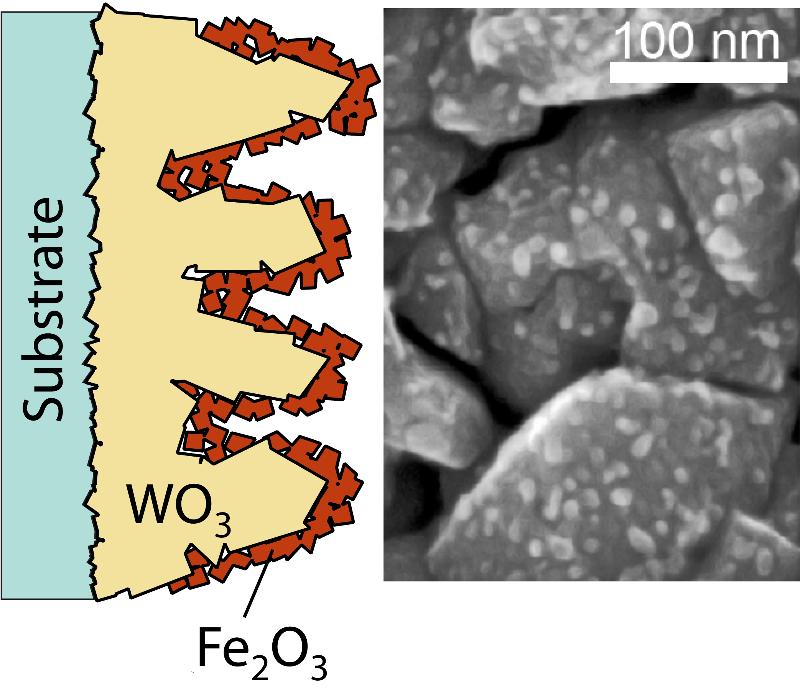 lytechnique Federale de Lausanne (EPFL), Lausanne, Switzerland has shown that a 15% solar hydrogen solar conversion
efficiency may be possible using solar photolysis. Studies on nanostructured hematite
(alpha-Fe2O3) shows it as a promising material for water splitting
because it is stable, plentiful
and has a band gap = 2.1eV making it a good solar absorber. An impressive 15%
solar-to-hydrogen (STH) conversion efficiency is possible. lytechnique Federale de Lausanne (EPFL), Lausanne, Switzerland has shown that a 15% solar hydrogen solar conversion
efficiency may be possible using solar photolysis. Studies on nanostructured hematite
(alpha-Fe2O3) shows it as a promising material for water splitting
because it is stable, plentiful
and has a band gap = 2.1eV making it a good solar absorber. An impressive 15%
solar-to-hydrogen (STH) conversion efficiency is possible.
For further details read the full SPIE article on www.spie.org.
Image: www.spie.org with permission from Kevin Sivula, EPFL, Switzerland
|
Dye-Sensitized Solar Cells Wins Prof. Michael Graetzel the Millennium Technology Prize
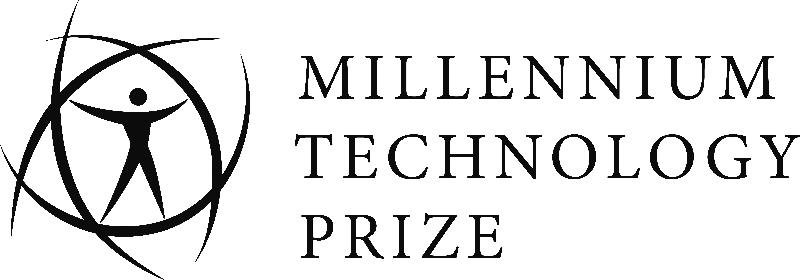 On the
9th of June 2010 the Millennium Technology Prize was awarded to
Professor Michael Graetzel, Ecole Polytechnique Federale de Lausanne
(EPFL) for his solar cell work. The Millennium jury in Helsinki has awarded 800,000 Euros for his work
on dye-sensitized solar cells. Prof. Graetzel and Brian O'Regan
developed dye-sensitized solar cell in 1991. Cells in excess of 10% conversion efficiency have been
shown. The cell is now on the European Union PV Roadmap for 2020. The professor
at is among the ten most-cited scientists in the world. Developed by studying photosynthesis, this
unique solar cell has only recently been commercialized. These dyed-sensitized
solar cells cost less to produce than other conventional based cells. Also, Prof.
Michael Graetzel has worked on improving lithium ion batteries by
making them safer and more efficient and solar energy conversion and storage of
hydrogen. On the
9th of June 2010 the Millennium Technology Prize was awarded to
Professor Michael Graetzel, Ecole Polytechnique Federale de Lausanne
(EPFL) for his solar cell work. The Millennium jury in Helsinki has awarded 800,000 Euros for his work
on dye-sensitized solar cells. Prof. Graetzel and Brian O'Regan
developed dye-sensitized solar cell in 1991. Cells in excess of 10% conversion efficiency have been
shown. The cell is now on the European Union PV Roadmap for 2020. The professor
at is among the ten most-cited scientists in the world. Developed by studying photosynthesis, this
unique solar cell has only recently been commercialized. These dyed-sensitized
solar cells cost less to produce than other conventional based cells. Also, Prof.
Michael Graetzel has worked on improving lithium ion batteries by
making them safer and more efficient and solar energy conversion and storage of
hydrogen.
Learn more about the Michael Graetzel and the Millennium Technology Prize
Follow the Millennium Technology Prize on Facebook
Image: Courtesy of Technology Academy Finland
|
European Union
Issues Ruling on Cadmium and First Solar's Production Expansion
The Environment Committee of the European Parliament voted
on June 2, 2010 to exclude renewable energy technologies from the European
Union (EU) law restricting hazardous substances in electronic equipment. This is the one step towards assuring
that EU market remains open to PV cells using cadmium and other restricted
materials.
The EU's 2002 directive restricting the use of hazardous substances in electrical and electronic equipment (ROHS) does not currently
cover solar cells. ROHS covers household appliances, consumer electronics and
other IT equipment. In
December 2009, Jill Evans, a member of the European Parliament coordinating
work on the ROHS law, recommended extending the law to all electrical and
electronic equipment, which would include PV cells. The June 2nd committee decision is one step
toward excluding PV cells. The
full European Parliament and European Council will make the decision. This is one of several updates the 2002
directive being proposed. Several groups, including the European Photovoltaic Industry Association
and American Chamber of Commerce to the EU, oppose extending the law to solar
cells.
Based on the encouraging decision by the Environment
Committee and with strong support from German regional and federal authorities,
First Solar, Inc. announced a major new investment to double the production
capacity of thin-film solar modules and creating several hundred new jobs in
their Frankfurt an der Oder plant. The projected fourth quarter 2011 annual capacity will be around 472
megawatts (MW). First Solar, Inc.
is one of the world's leading producers of PV modules with an expected annual
production capacity in excess of 1.4 Gigawatts (GWS) in Germany, the United
States and Malaysia in 2010. Three additional factories in France and Malaysia are being
constructed. When all factories
are completed in Q1 2012, First Solar, Inc. will have more than 2.2 GW of
capacity.
In Print Reference: Solar Industry - July 2010, pgs 4,6. Subscribe
Click here for more information at First Solar, Inc.
|
SEMI PV Group and Yole's
'Worldwide PV Equipment and Market Data Collection Program'
SEMI PV Group (Santa Clara, CA) working with Yole
Developpement (Lyon, France) have started an industry program which collects global information on the
growing PV equipment market, such as diffusion furnaces, PECVD for thin films,
and sputtering for thin films. They are looking for industry participants. Data is collected and issued
quarterly. Equipment market data
and market analysis are available, some for a fee. The SEMI PV Group partnered with Intersolar for the
Intersolar Europe event in Munich (June 9-11, 2010) and Intersolar North
America exposition and conference (co-located with SEMICON West 2010, July
13-15, 2010). Yole Developpement is a market research and strategy consulting
company involved in PV industry, MEMS, advanced packaging and compound
semiconductor.
Learn more about the program by visiting the PVGroup web site: http://www.pvgroup.org/MarketInformation/index.htm
and
http://www.semi.org/en/Store/Marketinformation/photovoltaics/CTR_028755
|
Sion Power's
Lithium-Sulfur Batteries Power World Record Flight
July 29, 2010
 "TUCSON, Ariz.--(BUSINESS
WIRE)--Sion Power announced today that their proprietary lithium sulfur
(Li-S) batteries played a critical role in the QinetiQ Zephyr smashing the
world record for the longest duration unmanned flight. A result of an intensive
joint development effort between Sion Power and QinetiQ, the Zephyr flight
exceeded 336 hours (14 days) of continuous flight, significantly surpassing the
previous official record of 30 hours 24 minutes set by Northrop Grumman's RQ-4A
Global Hawk in March 2001. The Zephyr's world record flight was completed on
July 23, 2010 at the US Army's Yuma Proving Grounds in Yuma, Arizona. "TUCSON, Ariz.--(BUSINESS
WIRE)--Sion Power announced today that their proprietary lithium sulfur
(Li-S) batteries played a critical role in the QinetiQ Zephyr smashing the
world record for the longest duration unmanned flight. A result of an intensive
joint development effort between Sion Power and QinetiQ, the Zephyr flight
exceeded 336 hours (14 days) of continuous flight, significantly surpassing the
previous official record of 30 hours 24 minutes set by Northrop Grumman's RQ-4A
Global Hawk in March 2001. The Zephyr's world record flight was completed on
July 23, 2010 at the US Army's Yuma Proving Grounds in Yuma, Arizona.
"This flight represents a major accomplishment for Sion's
lithium sulfur technology, proving the viability of our high energy,
rechargeable battery system"
The Zephyr, a solar/battery powered all electric UAV with a
wing span of 70 feet (22.5 m) and a weight of just over 110 lbs. (50 kg),
achieved this remarkable record using a combination of solar power during the
day and Sion Power's Li-S batteries at night. After a ground launch, the Zephyr
flew to altitudes of up to 70,000 feet, where the UAV encountered external
temperatures as low as minus 75 degrees C."
Learn More about Scion Power.
Read More about the Zephyr at QinetiQ.com.
Watch the Zephyr launch.
Image: © QinetiQ LTD 2010
|
|
 Interested in sharing the latest news in vacuum coating technology? Forward us a link to an article you want to share with the rest of the SVC readership to publications@svc.org. Purchase advertising space on this newsletter by contacting SVC at svcinfo@svc.org. Interested in sharing the latest news in vacuum coating technology? Forward us a link to an article you want to share with the rest of the SVC readership to publications@svc.org. Purchase advertising space on this newsletter by contacting SVC at svcinfo@svc.org. |
Society of Vacuum Coaters 71 Pinon Hill Place, NE
Albuquerque, NM 87122
(505) 856-7188 Fax (505) 856-6716
www.svc.org E-mail: svcinfo@svc.org
|
|
|